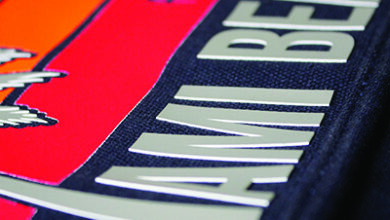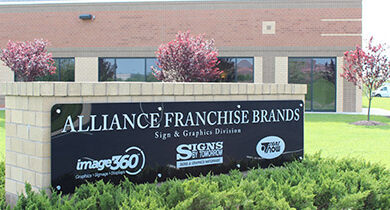
Navigating the complex world of wide-format printing can be overwhelming. Even for those already embarked on this journey, the ever-evolving landscape, coupled with the introduction of new applications and ink types, can leave individuals with too many questions. Where does one begin, and how do you make the most of the equipment you already have?
To provide some context, I am the showroom manager at Atlantic Graphic Systems in Columbia, Maryland. When I initially delved into this industry, I found myself grappling with the various ink types, just like many of our customers today. I had questions that mirrored theirs: What sets these inks apart? What are their applications, and why should one ink type be favored over another? The multitude of options available can be overwhelming, especially for those entering the world of wide-format printing. Despite being exposed to all three ink types in the signage industry, I still felt uncertain about which ink would best suit the task at hand. Now, I’ve come to appreciate the significance of comprehending the fundamental functions of each ink type.
Keeping pace with the cutting-edge technology in the wide-format industry requires a firm understanding of these ink types, which will, in turn, better prepare you for purchasing new equipment or optimizing the use of your existing printers, ultimately avoiding headaches down the road.
In the realm of commercial signage for wide format, there are three primary ink types in use: ultra-violet (UV), solvent, and latex (sometimes marketed as resin). These inks find application in both flatbed and roll-to-roll printers.
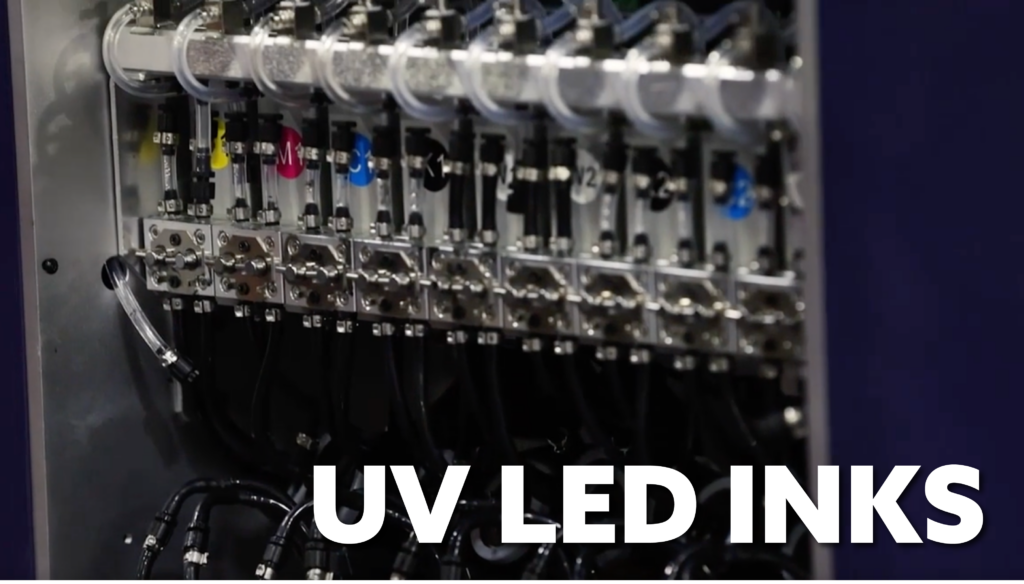
UV ink
UV inks are known for their rapid curing capabilities, facilitated by LED lights. They cure almost instantaneously when exposed to these lights, which is a significant advantage for wide-format printing workflows. The ink sits on the surface of the media, preventing it from absorbing into the substrate, resulting in sharper, crisper images. The instant curing property is particularly beneficial for post-finishing processes such as cutting, laminating, or applying. Since UV ink dries on top of the substrate, it creates texture and the ability to layer, providing a unique visual appeal.
UV inks can be further categorized into two types: hard and flexible. Hard UV inks are often used in flatbed printers, ideal for printing on rigid substrates where flexibility is not a requirement. In contrast, flexible UV inks, used in roll-to-roll printers, are suitable for applications involving flexible surfaces, such as adhesive wrapping, creasing, and large curved designs. The choice between these two ink types depends on your customer base, with the difference primarily impacting the ink’s ability to resist cracking and its overall durability.
However, it’s important to note some disadvantages of UV inks. They can be harmful to operators if they come into contact with the skin, and the LED light used for curing can pose risks to the eyes. UV inks also tend to result in colors with a matte finish, which might be less vibrant than those produced by other ink types. Moreover, UV outdoor signage has a relatively short lifespan of no more than two years, and the ink’s inability to easily wrap around sharp corners and curves can be limiting for applications like vehicle wraps.
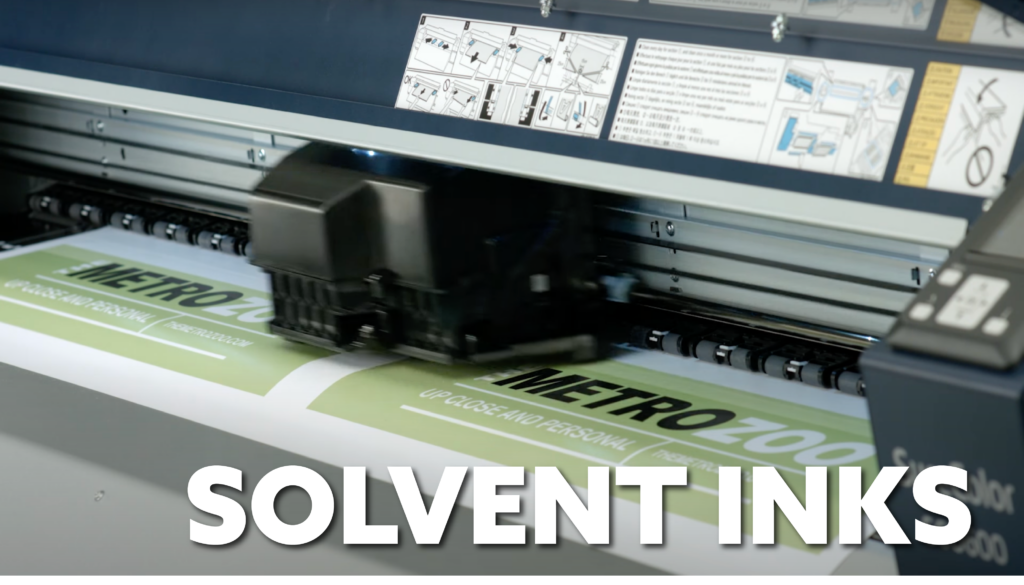
Solvent ink
Solvent ink, on the other hand, is pigment-based and requires heat for drying. It gets absorbed into the media and, post-application of heat, adheres effectively to the substrate. Solvent inks are known for their vibrant colors and their ability to adapt to a wide range of substrates. Unlike UV inks, solvent inks can yield both glossy and matte finishes, depending on the media they are applied to. This makes them suitable for vehicle wraps and outdoor signage, with a lifespan of up to five years.
Within the realm of solvent-based inks, there are two main types: traditional and eco-solvent inks. Traditional inks have a stronger chemical makeup compared to eco-solvent inks; which contain fewer hazardous chemicals. Although eco-solvent inks take more time to dry, they offer a safer and more environmentally friendly alternative.
However, there are some downsides to solvent inks, including the presence of odor, which can be undesirable for indoor applications. Eco-solvent inks produce less odor, making them a preferred choice for these settings. Additionally, solvent-based inks require off-gassing, and the duration of this process varies depending on factors such as ink coverage and substrate. The presence of alcohol in the pigment necessitates evaporation before post-finishing can occur.
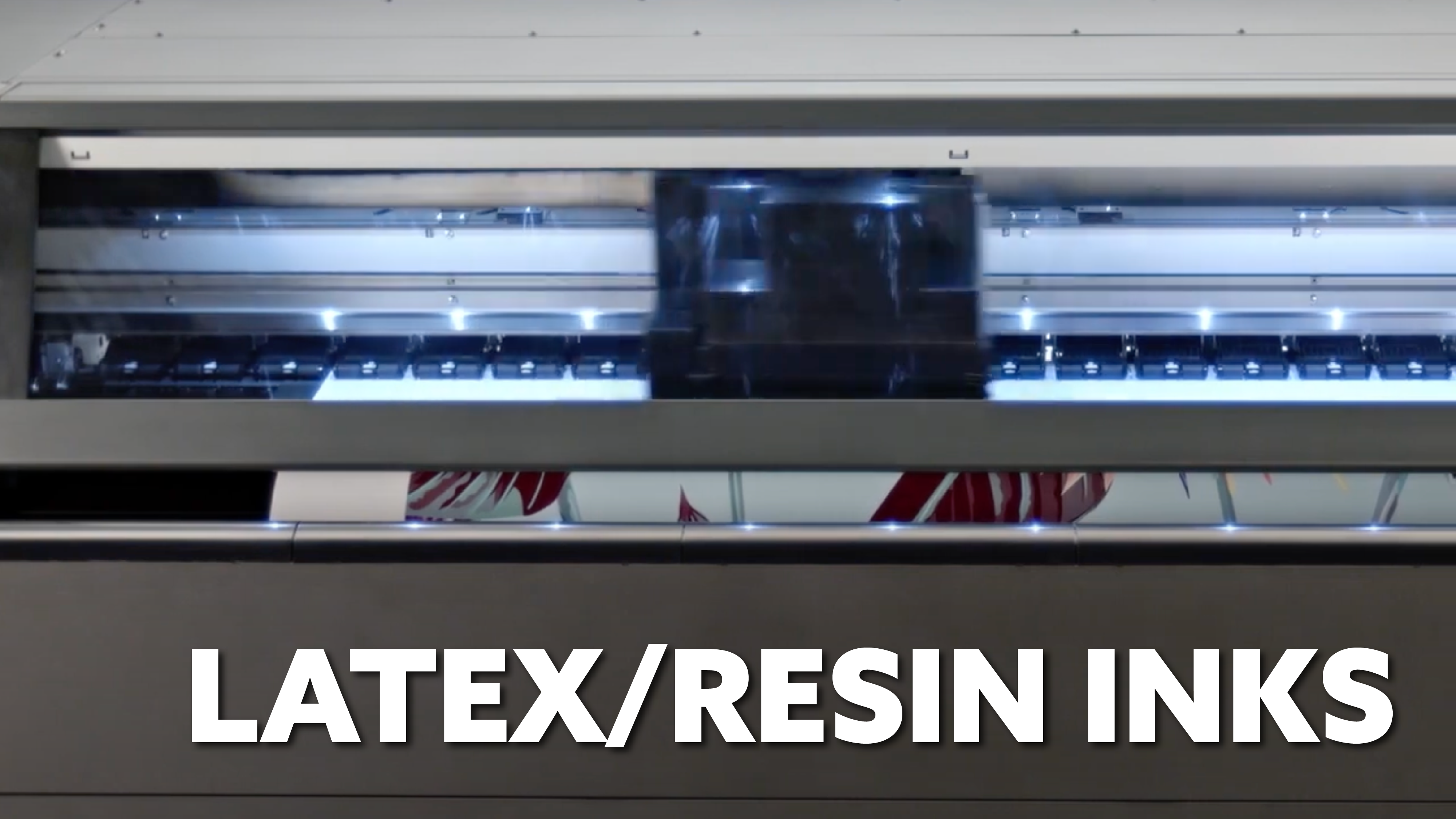
Latex ink
Latex inks are water-based inks with a small amount of plastic. They cure instantly with the application of heat and do not require off-gassing, making them ideal for indoor applications, such as wallpapers. They are also known for their lack of odor, further enhancing their suitability for internal use.
Resin ink, a variant of latex ink, contains a higher proportion of pigments in its composition. While it shares many output properties with latex ink, it is distinguished by its proprietary makeup.
Despite the advantages of latex inks for environmental and indoor applications, they have some drawbacks. Colors produced by latex inks are not as vibrant as those from solvent inks, and their flexibility in stretching around corners and curves, particularly in vehicle wraps, is limited compared to solvent inks.
In conclusion, the key takeaway is that the choice of ink type should align with your specific applications. Educating yourself on the differences between these ink types will enable you to evaluate printer models effectively and make informed decisions. The three different types of ink all have a place in the wide-format industry – what place will you take?
